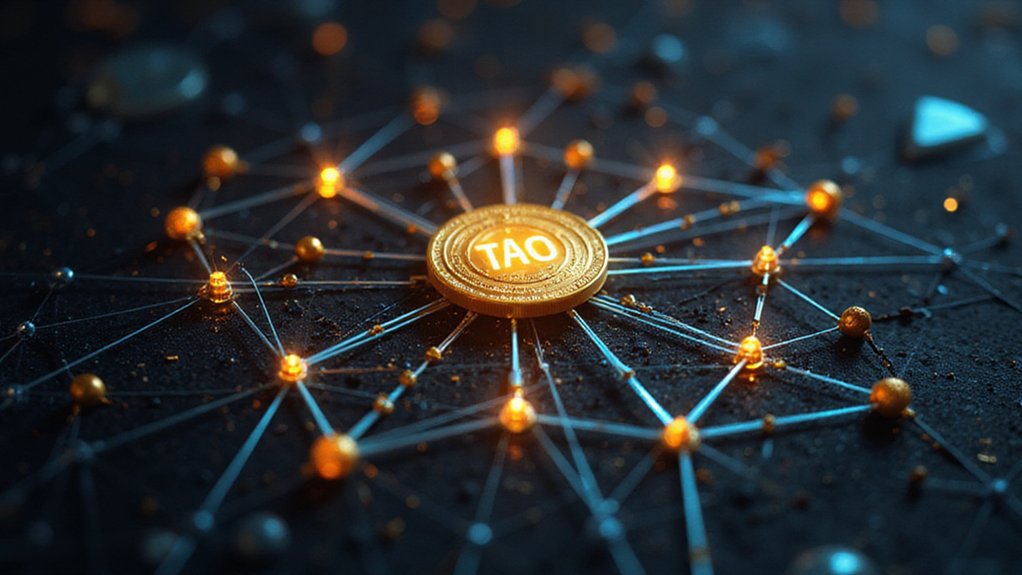Initial Coin Offerings (ICOs) represent blockchain’s answer to capital formation—a crowdfunding mechanism where ventures issue digital tokens in exchange for established cryptocurrencies or fiat. These unregulated fundraising events mirror IPOs without the regulatory guardrails, offering tokens that promise utility, governance rights, or merely speculative value. Despite generating billions during their 2018 heyday, ICOs exhibit alarming mortality rates, with fewer than half surviving beyond four months—a witness to the peculiar alchemy of innovation and exuberance that defines crypto markets.

An Initial Coin Offering, or ICO—that curious financial innovation birthed from the cryptocurrency revolution—represents one of blockchain technology‘s most controversial contributions to capital formation.
Functionally analogous to the traditional IPO but stripped of regulatory guardrails, ICOs enable blockchain ventures to raise capital by issuing digital tokens in exchange for established cryptocurrencies (typically Bitcoin or Ethereum) or occasionally fiat currency.
The mechanism typically manifests as a crowdfunding campaign wherein investors receive newly minted tokens that may confer utility, governance rights, or speculative value within the project’s ecosystem.
The structural architecture of ICOs exhibits considerable variation.
Some deploy a static supply/static price model with immutable parameters, while others implement dynamic pricing mechanisms responsive to market demand. These structures determine how tokens are distributed, with some projects implementing a dynamic supply approach where the token supply varies based on the amount of funding received.
The more sophisticated offerings may incorporate vesting schedules for founder-allocated tokens—a prudent, if voluntary, safeguard against precipitous selloffs.
At the heart of each offering sits the white paper, a document outlining the project’s technological underpinnings, market potential, and tokenomics that ranges from meticulously crafted technical manuscripts to hastily assembled marketing collateral.
Despite generating approximately $7 billion during their 2018 zenith, ICOs exhibit a sobering mortality rate, with fewer than half surviving beyond four months post-launch.
This attrition reflects both inherent market volatility and the regulatory ambiguity that continues to envelope the space.
The SEC’s evolving posture—increasingly classifying tokens as securities subject to traditional regulatory frameworks—has cast a long shadow over the once-exuberant market.
The ICO landscape exists in a curious financial twilight zone.
While some jurisdictions have enacted outright prohibitions (China and South Korea come to mind), others navigate a complex interplay between fostering innovation and protecting investors from potential malfeasance. The elimination of traditional financial intermediaries in ICOs creates direct connections between companies and their investors, streamlining the capital-raising process.
ICOs are often compared to other token distribution methods like Token Generation Events (TGEs), which place greater emphasis on token utility and ecosystem development rather than pure fundraising.
The absence of standardized global frameworks creates a regulatory patchwork that savvy projects must navigate with increasing sophistication.
For investors, ICOs present a paradoxical proposition: unprecedented accessibility to early-stage investments coupled with extraordinary risk profiles that would make traditional venture capitalists blanch.
Frequently Asked Questions
How Do Investors Evaluate ICO Projects Before Investing?
Investors scrutinize ICO projects through multi-dimensional due diligence, examining business model sustainability, tokenomics architecture, and regulatory compliance posture.
They dissect team credentials (those fascinating LinkedIn profiles often revealing more in omissions than inclusions), development roadmaps, and market fit—applying systematic evaluation frameworks with both qualitative hierarchical assessments and quantitative metrics.
The discerning investor recognizes that shorter token sales, equitable founder retention policies, and transparent bonus structures frequently correlate with superior post-ICO performance—though exceptions abound in this Wild West of digital finance.
Are ICOS Regulated by Government Financial Authorities?
Yes, ICOs face increasing regulation by government financial authorities worldwide, though the regulatory landscape remains fragmented.
In the U.S., the SEC applies the Howey Test to determine if tokens qualify as securities.
Hong Kong’s SFC regulates tokens under the Securities and Futures Ordinance.
The UK’s FCA evaluates ICOs case-by-case.
Most jurisdictions now require some combination of securities registration, AML/KYC compliance, and disclosure requirements—a regulatory web that has dramatically tightened since the Wild West days of 2017.
What Are the Risks Associated With Investing in ICOS?
Investing in ICOs entails a veritable minefield of hazards: regulatory ambiguity (as tokens dance between security and utility classifications), operational vulnerabilities (including hacking and project failure), extreme price volatility, and profound information asymmetries.
The lack of investor protections, combined with jurisdictional complexities, creates a perfect storm where due diligence becomes simultaneously essential and nearly impossible.
The ecosystem’s opacity—characterized by technical jargon, unverified claims, and limited issuer track records—further compounds these risks for would-be blockchain investors.
How Do ICO Tokens Differ From Traditional Securities?
ICO tokens differ fundamentally from traditional securities in regulatory treatment, ownership rights, and economic function. Unlike securities, ICO tokens—typically utility tokens—generally don’t confer equity ownership, voting rights, or dividend entitlements.
They exist primarily to access platform services rather than represent investment instruments.
While securities operate under established regulatory frameworks with investor protections, ICO tokens inhabit a regulatory gray zone, offering fewer safeguards against fraud.
This distinction explains why savvy investors approach these digital assets with appropriate skepticism.
What Happens if an ICO Fails to Reach Its Funding Goal?
When ICOs fail to reach their funding goals, investors typically receive refunds through automated smart contract mechanisms—a small consolation in the blockchain wilderness.
Projects face a stark crossroads: either fold operations entirely or (rather optimistically) attempt to continue with insufficient capital.
Beyond the immediate financial setback, failed ICOs suffer reputation damage that can haunt founders indefinitely.
With success rates plummeting from 90% to 10% between 2017-2019, the ICO graveyard continues its rapid expansion.









